
Blue-winged Olives
Baetis
Tiny Baetis mayflies are perhaps the most commonly encountered and imitated by anglers on all American trout streams due to their great abundance, widespread distribution, and trout-friendly emergence habits.
Featured on the forum

This species was fairly abundant in a February sample of the upper Yakima.

Troutnut is a project started in 2003 by salmonid ecologist Jason "Troutnut" Neuswanger to help anglers and
fly tyers unabashedly embrace the entomological side of the sport. Learn more about Troutnut or
support the project for an enhanced experience here.
Female Hexagenia limbata (Hex) Mayfly Dun Pictures
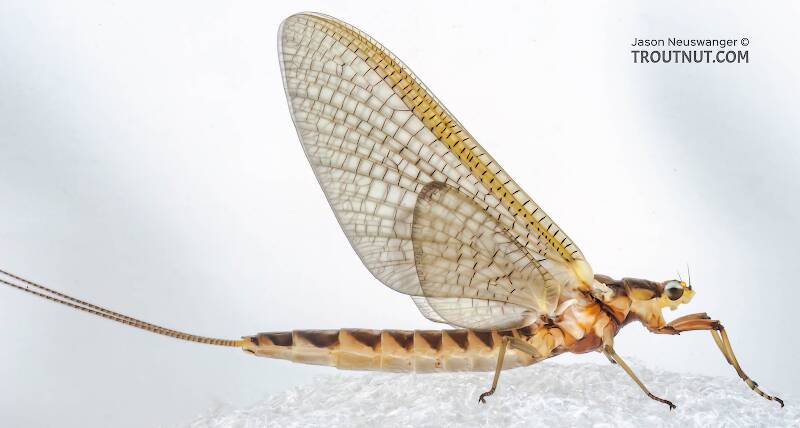
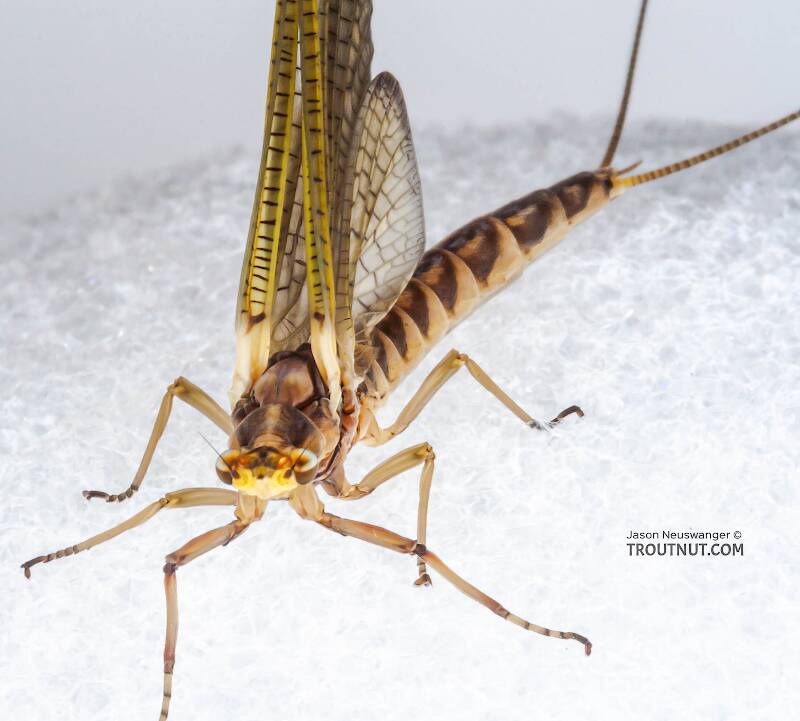
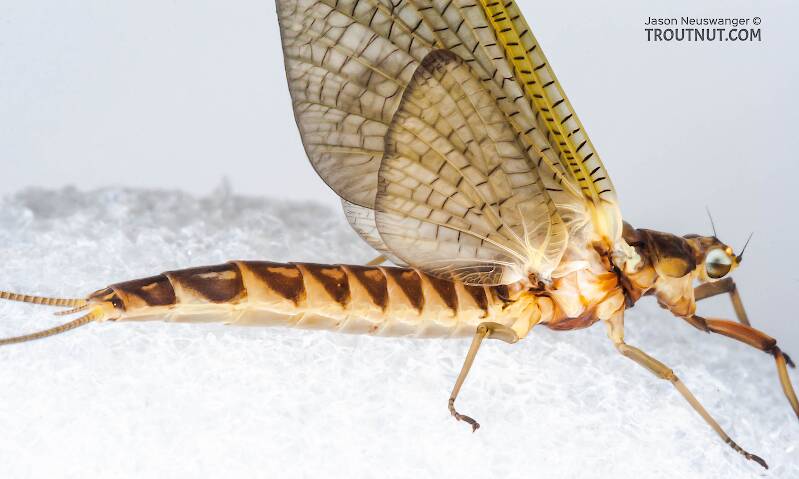
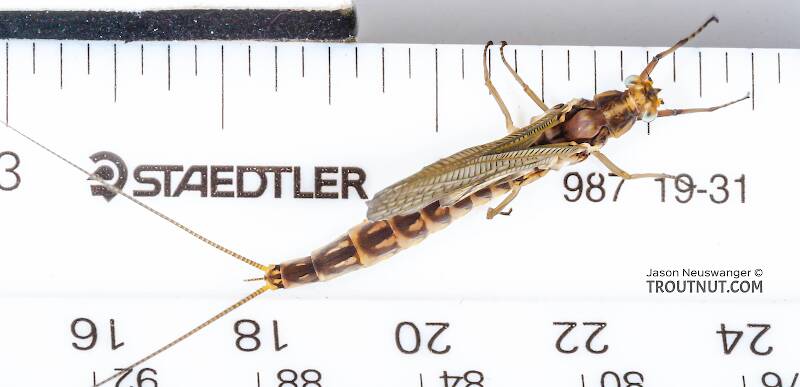
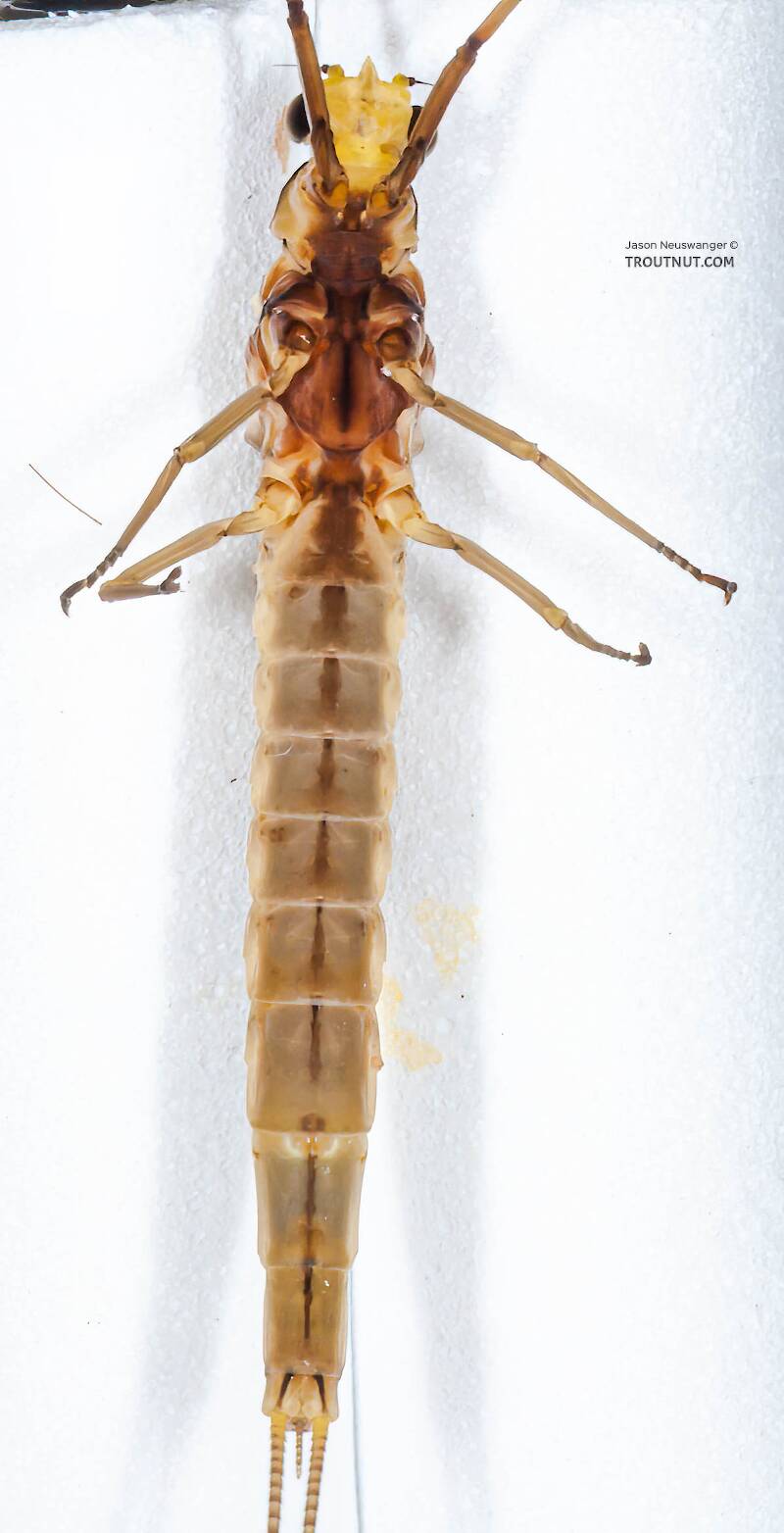
This mayfly was collected from the White River in Wisconsin on June 28th, 2005 and added to Troutnut.com by Troutnut on May 26th, 2006.
Discussions of this Dun
TYING DUN WINGS
6 replies
Posted by Waxsmith on Feb 9, 2015
Last reply on Feb 9, 2015 by Roguerat
Looking at the above pics of hexagenia duns and having seen millions of them on the water live, it strikes me again and again that the great majority of all the mayfly type duns sit there (perhaps not long)not with their wings spread but with them resting upright against each other. The Brit Oliver Edwards acknowledges this in his "cut-wing dun" pattern stating that it is a very sturdy fly which also cuts down on the nasty propellering habits of the partially spread wing tied dun pattern. So why is the traditional dun wing tying position so strongly adhered to?
Jason's hexagenia dun photos are excellent examples, also see Oliver Edwards' "FLYTYERS MASTERCLASS".
Jason's hexagenia dun photos are excellent examples, also see Oliver Edwards' "FLYTYERS MASTERCLASS".
Start a Discussion of Dun
Female Hexagenia limbata (Hex) Mayfly Dun Pictures
Collection details
Location: White River, Wisconsin
Date: June 28th, 2005
Added to site: May 26th, 2006
Author: Troutnut
Date: June 28th, 2005
Added to site: May 26th, 2006
Author: Troutnut

